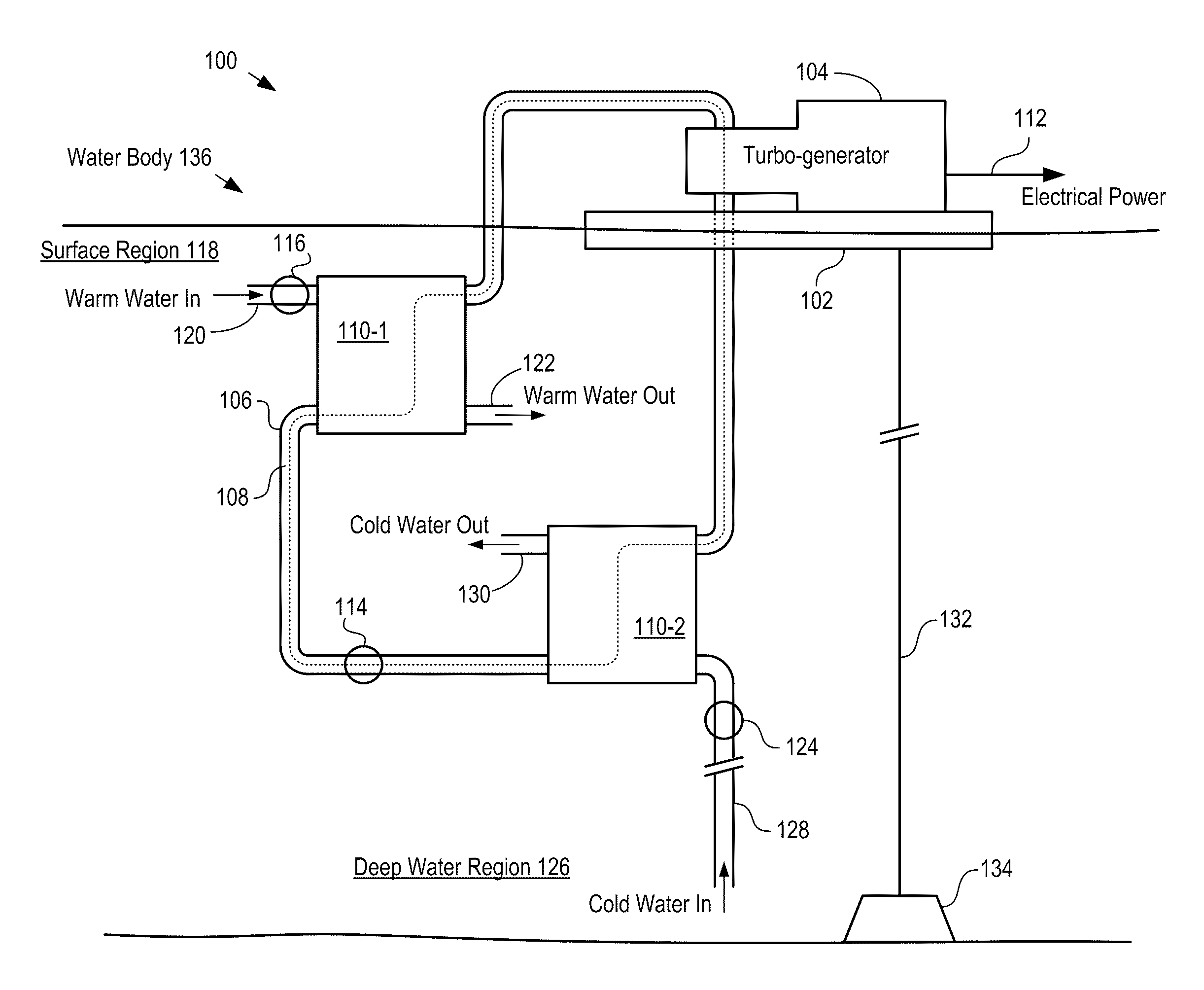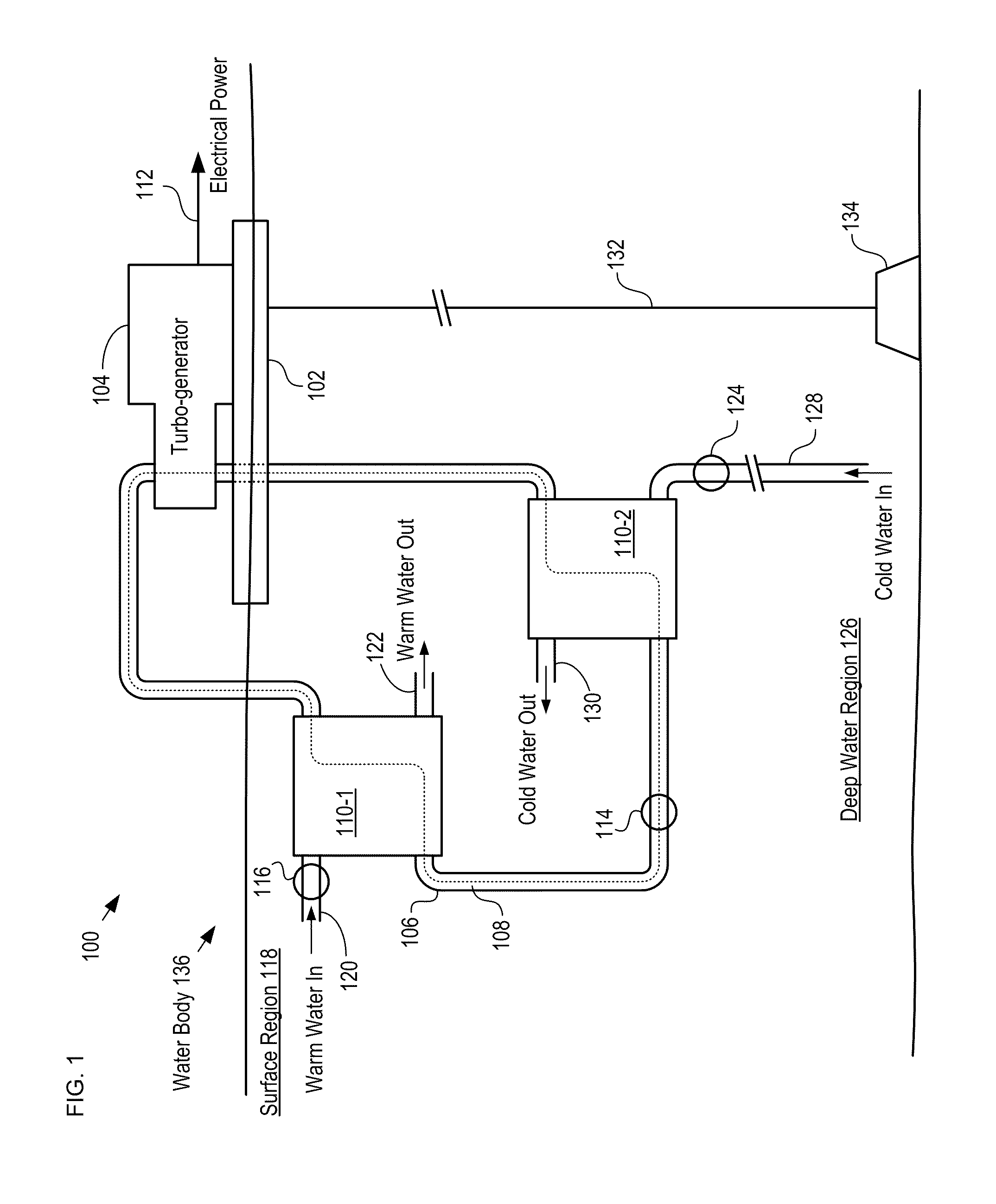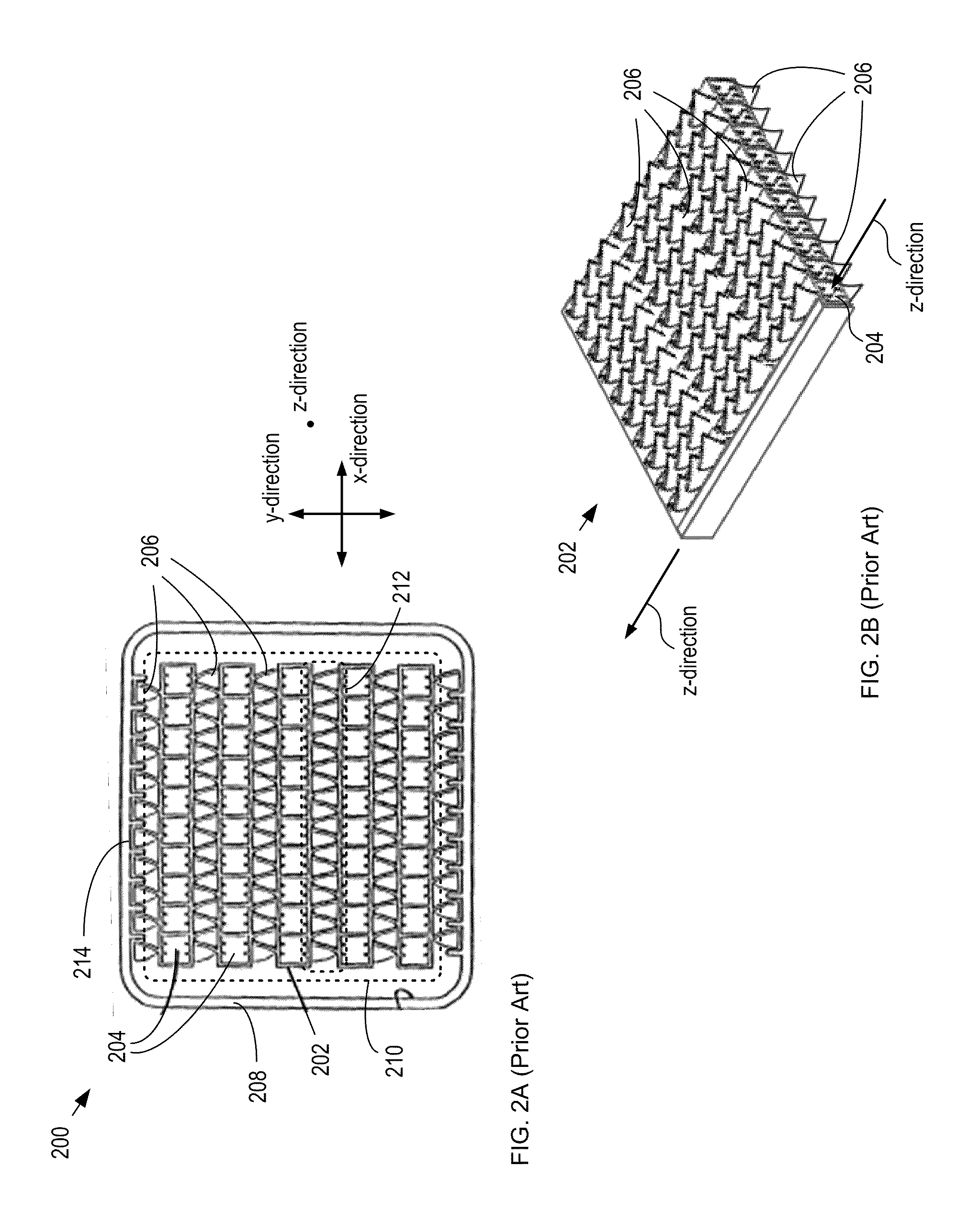Heat Exchanger Comprising Wave-shaped Fins
a wave-shaped fin and heat exchanger technology, applied in the field of energy conversion, can solve the problems of high capital cost of these systems, thwarting commercialization, and increasing the capital cost of otec plants, so as to increase the overall convection heat transfer in the flow passage, increase the fluid back pressure, and enhance the effect of heat transfer
- Summary
- Abstract
- Description
- Claims
- Application Information
AI Technical Summary
Benefits of technology
Problems solved by technology
Method used
Image
Examples
Embodiment Construction
[0039]FIG. 1 depicts a schematic diagram of an OTEC power generation system in accordance with an illustrative embodiment of the present invention. OTEC system 100 comprises turbogenerator 104, closed-loop conduit 106, heat exchanger 110-1, heat exchanger 110-2, pumps 114, 116, and 124, and conduits 120, 122, 128, and 130. OTEC system 100 is deployed in water body 136 wherein a suitable temperature difference exists between water near the surface and water located at a deep level of water body 136.
[0040]Turbo-generator 104 is a conventional turbine-driven generator. Turbogenerator 104 is mounted on floating platform 102, which is a conventional floating energy-plant platform. Platform 102 is anchored to the ocean floor by mooring line 132 and anchor 134, which is embedded in the ocean floor. In some instances, platform 102 is not anchored to the ocean floor but is allowed to drift. Such a system is sometimes referred to as a “grazing plant.”
[0041]In typical operation, pump 114 pumps...
PUM
 Login to View More
Login to View More Abstract
Description
Claims
Application Information
 Login to View More
Login to View More - R&D
- Intellectual Property
- Life Sciences
- Materials
- Tech Scout
- Unparalleled Data Quality
- Higher Quality Content
- 60% Fewer Hallucinations
Browse by: Latest US Patents, China's latest patents, Technical Efficacy Thesaurus, Application Domain, Technology Topic, Popular Technical Reports.
© 2025 PatSnap. All rights reserved.Legal|Privacy policy|Modern Slavery Act Transparency Statement|Sitemap|About US| Contact US: help@patsnap.com



